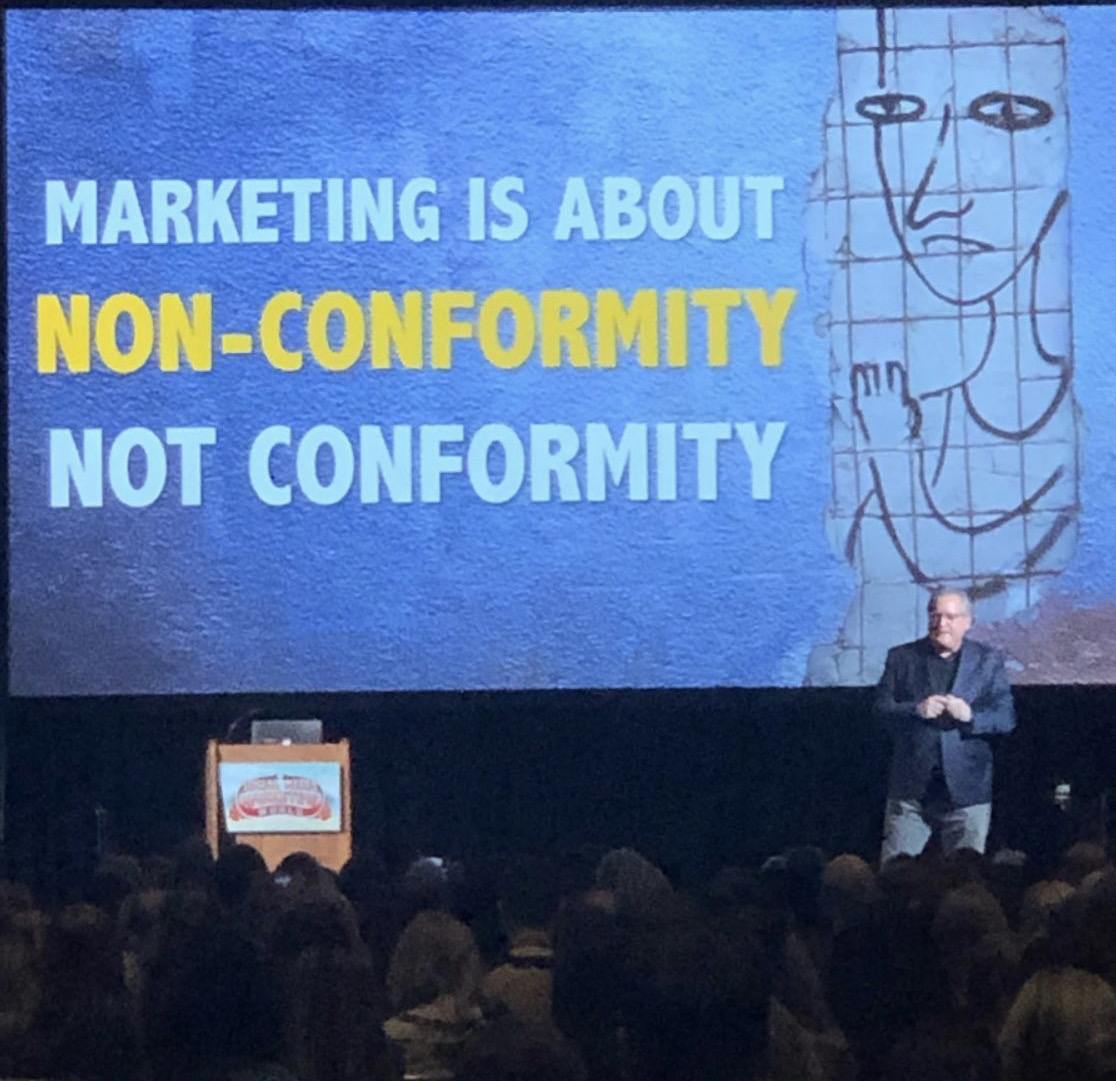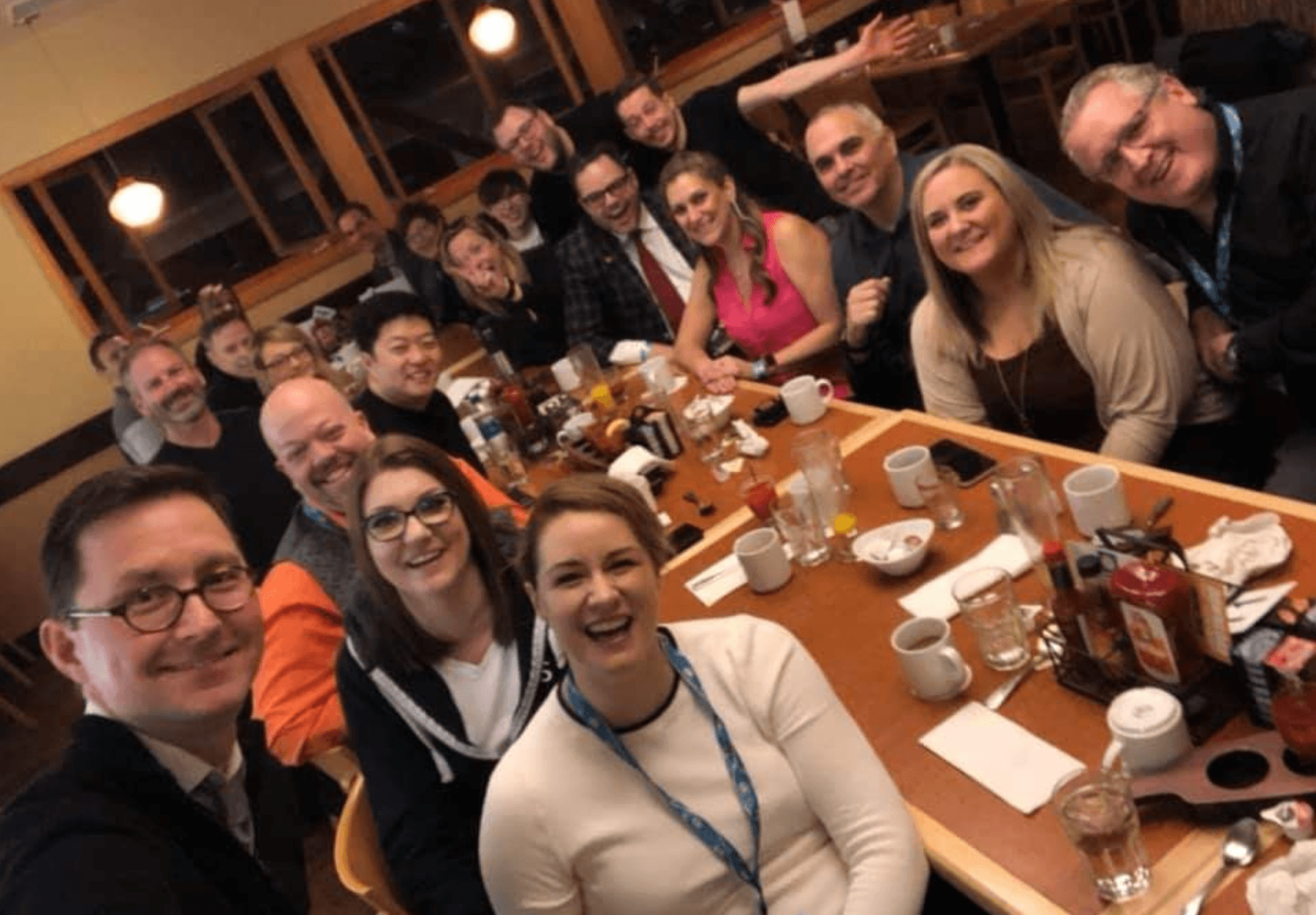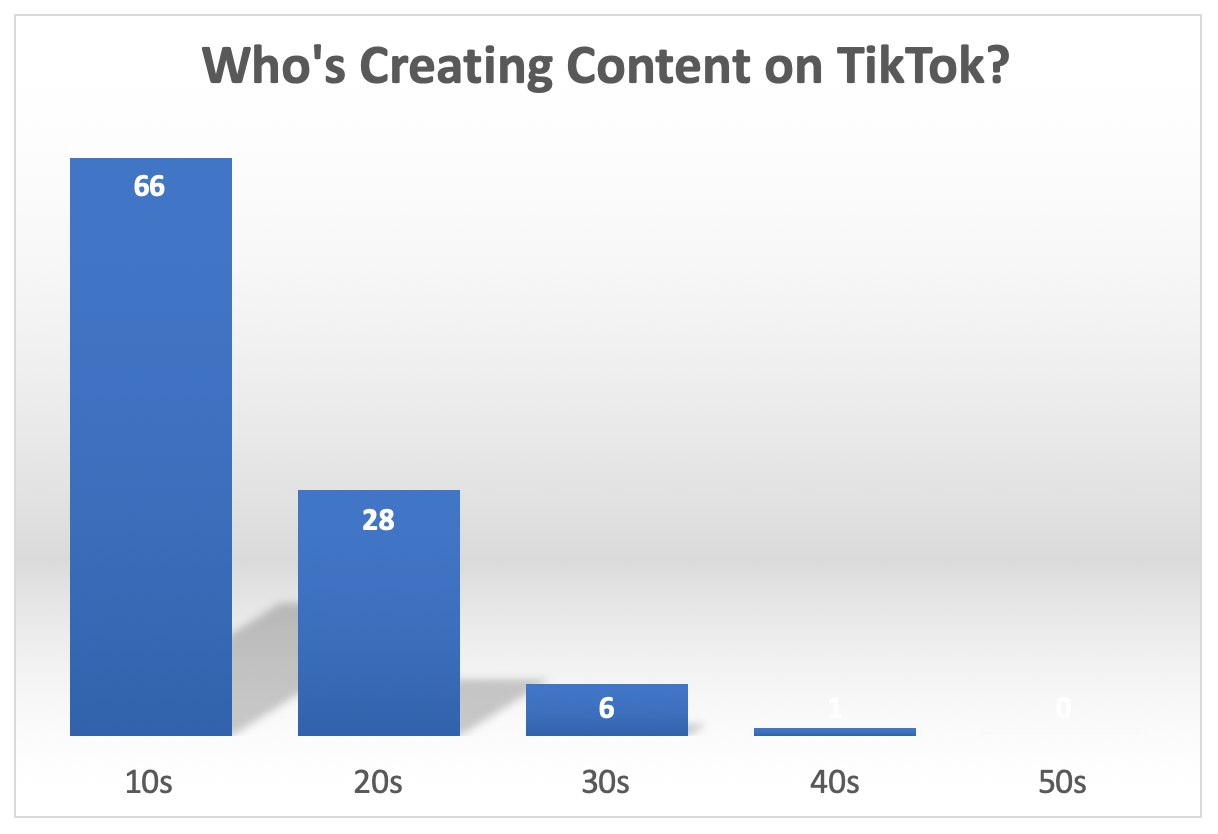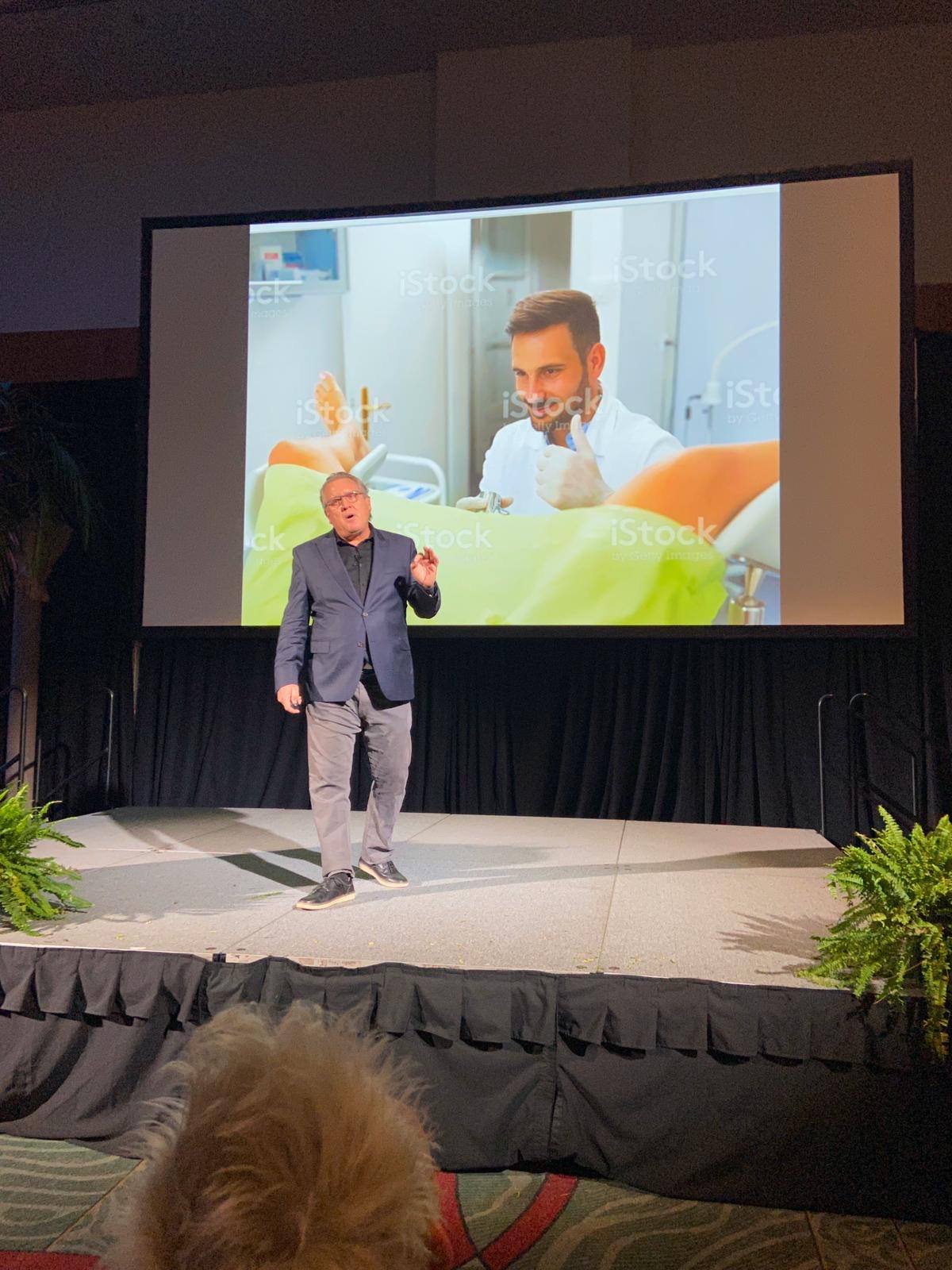http://feedproxy.google.com/~r/markgrow/~3/zAsQ-9L3Iyg/

Winning the War for Attention
I’ve been a speaker at all eight Social Media Marketing World events and it is always an annual highlight for me. It’s like coming home to family — so many wonderful friends to see! If you’ve never attended, you should give it a try and discover the fun.

In the early days of SMMW, I spoke on Twitter and blogging, then I evolved into content and strategy. In 2016 I was asked to be the closing keynote speaker and I did it again in 2019. What a thrill to speak in front of 5,000 frenzied social media friends!
I think a key to my success at this event is that I always push boundaries with fresh, exciting content. My philosophy is that a great speech delivers insights, not just information. Information … you can get that in a blog post. But you’ll have a unique experience coming to one of my talks!
I pushed the boundaries again this year by doing something different. I spoke from my heart about the biggest problem facing social media marketers today — winning the war for attention.
I see that social media marketers simply try to keep up by copying others or following directions from their favorite gurus. This simply cannot work. Winning a war for attention means we can’t be conformists.
So let’s dig into the heart of the speech …
Winning the War for Attention
I started my speech with a funny story from the early days of television to illustrate a pattern that happens in every content channel.
When TV started in the 1950s, the programs were filled with local talent — singers, cooks, and anybody who could fill some time on the air. Almost anybody could get on the air and almost any business could buy advertising time.
Over the years, the channel “filled up,” and the content became more expensive and sophisticated. Local advertisers dropped out and network (and then cable) TV took over.
Today, what does it take to get your attention on TV? Game of Thrones. At $10 million per episode for a show like that, the content has never been better but if you’re trying to compete on the basis of content, bring your checkbook!
As I told this story, I asked my audience to think of the similarity of what is happening in their own favorite social media space. The same pattern will happen over time. The space fills up with content and it becomes more expensive and difficult to compete, an idea I first introduced in 2014 with an idea called Content Shock.
Now, what do we do about it?
I proposed that answering five questions can lead you to a strategy that helps you win the war for attention. Here they are.
1. Only we …
I asked the audience a simple question. Can you finish this sentence: “Only we …”?
This is a very important question because if you can’t finish that sentence, you don’t have a marketing strategy and if you don’t have a marketing strategy, you can’t have a social media strategy. You’re being set up to fail.
It may take you weeks or even months to figure this out. But you simply must find these special points of differentiation. If you’re stuck, go out and ask your customers what they think. You’ll almost always find the answer there.
2. Company culture
In my Marketing Rebellion book, I go deep into this idea of how company culture really determines how successful you’ll be with your social media marketing.
book, I go deep into this idea of how company culture really determines how successful you’ll be with your social media marketing.
The company culture both enables your narrative and constrains your ability to win the war for attention. If you have a culture that is open, nurturing and fun … that will be your social media presence. If you’re uptight and controlling, you probably won’t get very far in winning the war for attention.
This can be frustrating because no amount of energy and talent can overcome a dismal company culture. Sometimes, an effective social media strategy has to start with executive education.
I made the point that sometimes social media success must start with executive education.
3. Are you a conversational brand?
I said that the business case for all social media is this: “Come Waste Time With Me.”
Nobody has to be on social media. So to succeed, you have to earn a place that makes people want to waste time with you. Why would they want to do that?
Not all products and industries have an equal chance to win the war for attention.
If you work for a university, a sports team, a pop star, or a professional athlete, you will naturally have a high level of attention and organic reach.
If you work for a bank, the electric company, or a company that makes appliances … well, these just are not going to make it to dinnertime conversations. You’re not that conversational and it will be much, much harder for you to win the war for attention.
You have to make yourself conversational. This does not necessarily have to be difficult or expensive, but you do have to stand out in some unique way.
I provided an example of a hand tool company in Lithuania that went viral over its videos that explored how the tools were hand-crafted.
4. How can you maneuver?
I explained to the audience that this was the most important part of the talk. My concern is that everybody leaves a conference like Social Media Marketing World and follows whatever the gurus tell them to do. I see this year after year.
If it is the year of Snapchat, everybody piles on to Snapchat.
If it is the year of video on LinkedIn, then that is what everybody does.
Marketers flock to whatever is popular until they ruin it.
And that’s no strategy. Winning the war for attention depends on non-conformity, not conformity.
I used an example of TikTok, which was a big piece of the conversation at SMMW20. There seems to be a frenzy to get every business on to TikTok. Research shows that indeed, there is a growing older audience there. But let’s take a closer look:

Did you know that about 94 percent of the content created on TikTok is by teenagers? This implies we have a lot of older people stalking TikTok (as they first did with Snapchat before dropping out). So do you really need to be building an audience of 12-year-olds for your business? Maybe.
I’m not against TikTok, I’m just saying, “THINK” and don’t spend budget on activities because some guru told you to do it (This part of my talk received applause!)
To be effective today, you cannot be guru-led and fall in line with a crowd. You have to zig when everybody else is zagging.
To illustrate this, I provided examples from three very saturated industries — real estate, food, and entrepreneurial content — and showed that a little simple creativity helped businesses stand out and create great success.
5. Human-centered content
In this part of my speech, I noted that every great social media success story has a human anchor providing some unique value. (I cover this in detail here: A simple theory of social media success).
I showed how many companies are missing out on opportunities to show real human smiles, personalities, and passion because they act like grape lollipops, which say they are grape but are not really grape at all!
This was the funniest part of my speech and I got the biggest laugh I think I have ever received as I covered a few big social media fails!

The point is, the most human company wins — it just does. I believe that with every fiber in my body. And you won’t be winning the war for attention with some fake and inauthentic presence.
Putting it into action
These are the types of guidelines I use with my clients, and they work. They’re not that hard. But they do take a bold willingness to not follow the crowd.
I ended my talk encouraging the crowd to:
- Be a non-conformist.
- Maneuver.
- Be more human.
It seems simple, doesn’t it? How are you being a non-conformist in your industry?
 Mark Schaefer is the chief blogger for this site, executive director of Schaefer Marketing Solutions, and the author of several best-selling digital marketing books. He is an acclaimed keynote speaker, college educator, and business consultant. The Marketing Companion podcast is among the top business podcasts in the world. Contact Mark to have him speak to your company event or conference soon.
Mark Schaefer is the chief blogger for this site, executive director of Schaefer Marketing Solutions, and the author of several best-selling digital marketing books. He is an acclaimed keynote speaker, college educator, and business consultant. The Marketing Companion podcast is among the top business podcasts in the world. Contact Mark to have him speak to your company event or conference soon.
The post Winning the War for Attention: A talk from #SMMW20 appeared first on Schaefer Marketing Solutions: We Help Businesses {grow}.


 Mark Schaefer is the chief blogger for this site, executive director of Schaefer Marketing Solutions, and the author of several best-selling
Mark Schaefer is the chief blogger for this site, executive director of Schaefer Marketing Solutions, and the author of several best-selling 




 Mark Schaefer is the chief blogger for this site, executive director of Schaefer Marketing Solutions, and the author of several best-selling
Mark Schaefer is the chief blogger for this site, executive director of Schaefer Marketing Solutions, and the author of several best-selling 